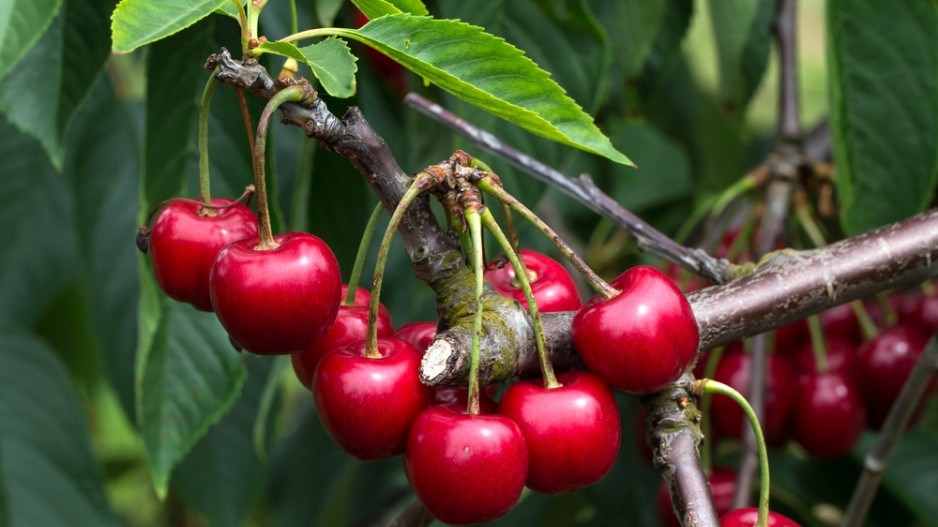For B.C. cherry growers, deals like the one announced last month that give them greater access to export markets such as Japan are more crucial to the industry than anyone outside the sector might imagine.
That’s because rising labour expenses, higher production costs and the crop’s sensitivity to weather make locally grown cherries far more expensive to produce than their counterparts in neighbouring Washington state. B.C. growers therefore have to court markets like Asia, where consumers are willing to pay a premium for Canadian fruit.
“With the Japanese market, it matches really well to the products we grow,” said BC Cherry Association president Sukhpaul Bal, who applauded Ottawa’s announcement on August 24 that Canadian cherries can now be sold in Japan. “Most growers will tell you that if they could sell most of their cherries locally without having to deal with the logistics of exporting, they would. But we just can’t get the returns locally.”
Officials say consumers in China, for example, might pay as much as $10 for a pound of cherries. That number falls to $2 in the Okanagan. The province signed an agreement in 2014 with China to allow B.C. cherries to reach the Chinese market, and China has been among the largest export markets for the fruit since then.
In 2017, B.C.’s cherry exports totalled $81.5 million. The United States, mainland China, Hong Kong, Taiwan and Vietnam were the top five markets. With the exception of Vietnam, they are among B.C.’s top six destination markets for agri-food and seafood products.
Japan, ranked third with $204 million in agri-food and seafood imports from B.C., was the largest market on the list to exclude B.C. cherries prior to the August announcement of the export agreement. Last year, Japan imported more than $62.7 million in fresh cherries from other producers such as the United States.
The federal government noted that part of the access agreement also entails Canada’s participation in the Comprehensive and Progressive Agreement for Trans-Pacific Partnership, which will eliminate Japan’s 8.5% tariff on fresh cherries within five years of Ottawa’s ratification of the trade agreement. But Bal noted that cherries and other fruit have faced issues other than tariffs, because countries like Japan and South Korea have maintained strongly protectionist policies to shore up their domestic agricultural sectors.
Cherry association officials said discussions are underway with the industry looking to gain access to South Korea. Ranked fourth among B.C.’s top agri-food and seafood export destinations, it imported $71.3 million worth of food from those sectors in 2017. South Korea is also closed to Canadian cherries but packed with consumers willing to pay higher prices for the commodity.
“We’ve been working on both Japan and South Korea at about the same time,” Bal said. “It’s just that with Japan, we had a bit of a head start; we did a lot of legwork in previous years, and this year we just really put the focus there and got the CFIA [Canadian Food Inspection Agency] working on our behalf. With that deal happening just now, we’re optimistic that South Korea will be the next market.”
B.C. produces 90% to 95% of Canada’s cherries, but most are exported. Most of the cherries sold in other parts of Canada are grown in Washington state because Canadian grocers like Loblaws tend to centralize buying decisions and act on price, which excludes many B.C. growers, Bal noted.
B.C. cherry industry representatives will now travel to Hong Kong to attend the Asia Fruit Logistica trade show in September. Bal said they will start reaching out there to Japanese buyers. Next year, there will likely be a trial run of B.C. cherries hitting the Japanese market, and registration for farms interested in doing business – similar to the model for the farms exporting to China – will be led by the CFIA. •




